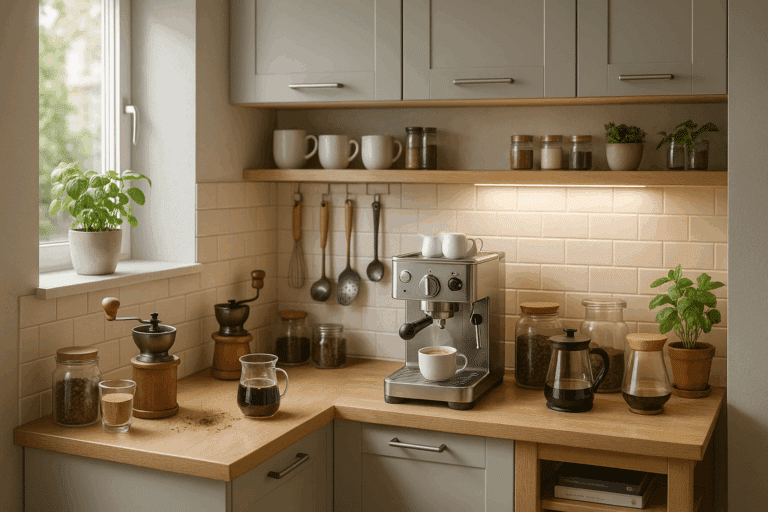If you’re someone who constantly seeks out innovative health and wellness practices, chances are you’ve heard about the cupping therapy. This age-old therapeutic method, which is gaining mainstream popularity, is not just for celebrities and athletes; it’s now a part of many people’s regular health routines. Welcome to the world of Cupping! In this comprehensive guide, we will explore the intriguing phenomenon of cupping therapy, and how to create a relaxing and fun cupping session with friends. 😊
But first things first – what is cupping therapy? 🤔 Cupping is a type of alternative therapy that originated in China. It involves placing cups on the skin to create suction, which can facilitate healing with improved blood flow. This method is used for many purposes, including to help with pain, inflammation, blood flow, relaxation, and well-being. It’s an intriguing combination of traditional practices and modern wellness trends.
Why cupping therapy? 🎯
So why has cupping therapy become such a trend? Apart from the unique and slightly adventurous appeal, it actually boasts several health benefits. From improved circulation and reduced muscle tension to the promotion of cell repair and better digestion, cupping therapy is being hailed as a versatile remedy for a host of ailments. What’s more, with a bit of practice, it’s possible to perform a basic cupping session in the comfort of your own home. Imagine hosting a fun and relaxing wellness night in with friends, where you learn and practice the art of cupping together!
Fun and relaxation with cupping therapy 🥳
What makes cupping therapy so special is that it’s not just about health – it’s also about relaxation and having fun. While it might sound daunting, organizing a cupping therapy session with friends can be a delightful way to spend an evening. Picture this: soft music playing, everyone comfortably lounging, a selection of organic teas on hand, and the unique experience of learning and practicing cupping therapy together. And let’s not forget about the incredible health benefits and the great conversations that are sure to ensue!
What to expect in this guide 📖
In this comprehensive guide, we will discuss the various techniques involved in cupping therapy, its potential benefits, and precautions you need to consider. We will also walk you through the process of organizing a successful cupping session at home with friends. This will include tips on setting up the right ambiance, selecting the right equipment, and guiding your friends through the process. It’s going to be a fascinating journey – one that will give you plenty of conversation starters for your next get-together!
So, if you’re looking for something different to do with your friends that promotes wellness and relaxation, you’re in the right place. After all, it’s not every day you get to try out a therapy that’s been around for centuries! This guide will provide you with everything you need to know about cupping therapy, and how to enjoy a fun-filled and relaxing cupping session with friends. 🎉
Let’s dive right in!
🍵 Dive into the Cupping Craze: A Comprehensive Guide
With the recent boom in wellness trends, you might have come across the term “cupping.” This ancient therapy has been making waves as a fun, relaxing, and healthful activity to do with friends. Whether you’re a wellness enthusiast, looking for something new to try, or merely curious about the intricacies of cupping, this guide is tailor-made for you. Here, you’ll find all you need to know about organizing a cupping session, right from the basics of cupping to the benefits, risks, and a step-by-step guide to a safe and relaxing session.
🔍 Understanding the Basics of Cupping
In its essence, cupping is an alternative therapy that originated in China thousands of years ago. It involves placing cups on the skin to create suction, which facilitates healing by improving blood flow and removing toxins. The cups used can be made from a variety of materials, including glass, bamboo, and silicone.
The process of cupping involves heating the inside of the cups and then placing them on the skin. As the air inside the cup cools, it creates a vacuum, causing the skin to rise and redden as blood vessels expand. The cup is generally left in place for up to 10 minutes.
There are two primary types of cupping: dry and wet. Dry cupping solely involves suction, while wet cupping involves a combination of suction and controlled medicinal bleeding.
🔬 The Science Behind Cupping
Cupping works by expanding the capillaries and increasing the amount of fluid entering and leaving tissues. Besides this, it stretches open the tiny arterioles and venules, promoting better blood flow. The suction and negative pressure provided by cupping can loosen muscles, encourage blood flow, and sedate the nervous system. For this reason, cupping is often used to relieve back and neck pains, stiff muscles, anxiety, fatigue, migraines, and even cellulite.
Though scientific evidence supporting the health benefits of cupping is scarce, the therapy has been used for thousands of years to treat a range of ailments. From a scientific perspective, the heat from the cups is believed to increase blood flow, promoting healing. This is similar to how a hot compress works. However, the unique element of suction distinguishes cupping from other hot compress therapies.
💡 How to Set Up a Cupping Session at Home
Creating a calming environment is crucial for a successful cupping session. Here’s a step-by-step guide to setting up your own session at home.
1. Gather Your Materials
You will need a set of cups (these can be purchased online or from a health store), a source of heat (if using traditional glass cups), and a comfortable space. Ensure the area is clean and free of distractions.
2. Prepare the Participant
The person receiving cupping should be comfortable and relaxed. They should sit or lie down in a position that exposes the area to be cupped. This is usually the back, but cupping can be done on other parts of the body too.
3. Apply the Cups
For beginners, it’s recommended to start with dry cupping. Apply the cups to the desired area and leave them on for about 10 minutes. If you’re using a fire cupping set, light a cotton ball soaked in alcohol, hold it inside the cup to heat the air, remove it, then quickly place the cup on the skin. The cooling air inside the cup creates the suction.
Note: Always ensure safety when using fire. Never leave the burning cotton ball unattended, and always have a fire extinguisher or water nearby.
4. Remove the Cups
After about 10 minutes, or once the skin has turned pink or red, carefully remove the cups. This can usually be done by gently lifting the edge. After removal, cover the area with a cloth to keep it warm.
5. Clean Up
After the session, be sure to clean all the used cups with warm water and a mild disinfectant. It’s also advisable to drink plenty of water to help remove any toxins that may have been released during the session.
⚖️ Cupping Benefits and Risks
| Benefits | Risks |
|---|---|
| Increased blood flow | May cause discomfort during the process |
| Relief from pain and muscle tension | Can cause minor, temporary bruising |
| Boosted immune system by moving blood and lymphatic fluid throughout the body | Risk of burns when fire is used improperly |
| Can help alleviate anxiety and stress | Can cause skin infections if cups are not properly cleaned |
For a deeper understanding of the cupping process and its benefits, check out this video from the YouTube channel “Massage Sloth”: “Cupping Therapy: How It Works & Its Benefits”. The video gives a detailed and visually engaging demonstration of the cupping process.
📣 Wrapping Up
Cupping can be a fun and relaxing activity to do with friends, offering a unique bonding experience while also promoting health and wellness. Just remember to prioritize safety and comfort at all times, and don’t be afraid to seek professional guidance if you’re unsure. Happy cupping!

Conclusion
As we draw to a close on this comprehensive article, it’s essential to have a recap of the key concepts we have discussed. The central theme of our conversation has been about the intersection between Information Technology (IT) and engineering, a realm that’s rapidly transforming the professional and personal world around us.
We started off with an introduction to the concept of IT and engineering, explaining its relevance in today’s digital age. We navigated through its various applications, from its use in business and education to healthcare and more. 📚💻
Subsequently, we delved into the intricacies of how IT and engineering intersect, with an emphasis on the profound impact it has on our lives. It was a meticulous exploration of areas such as software development, network design, system analysis, and data management, among others. 💼🖥️
Furthermore, we highlighted the importance of having a solid understanding of IT and engineering, particularly for those who work in these fields. This understanding not only improves your problem-solving skills, but also enhances your creativity and innovation – key factors in staying competitive in the job market. 💡🚀
As we navigated this journey, we leaned on reliable sources like the Institute of Electrical and Electronics Engineers (IEEE) and Computer Society to enrich our understanding. These platforms provide a wealth of information for anyone keen on exploring the world of IT and engineering further.
This article has been an opportunity to delve deep into the technicalities of IT and engineering, but the conversation doesn’t have to end here. Your thoughts, comments, and experiences are a valuable addition to this discussion. Engage with us in the comments section below, or share this article with others who might find it useful. 🌐🗣️
The beauty of technology is that it’s always evolving, and there’s always more to learn. As you continue to explore and grow in your understanding of IT and engineering, remember that the ability to explain complex concepts in a comprehensible manner is a skill that’s not only rare, but also invaluable. As Steve Jobs once said, “Technology is nothing. What’s important is that you have faith in people, that they’re basically good and smart, and if you give them tools, they’ll do wonderful things with them.” 🛠️💫
In conclusion, IT and engineering are powerful tools in today’s world. With a keen understanding and the ability to articulate complex concepts in these fields, you’re not just equipped for the future, you’re driving it. Stay curious, keep learning, and keep sharing your knowledge with the world. Your journey is just beginning. 🔭🚀
Don’t forget to bookmark this page for future reference, share it on your social media platforms, and do return for more enlightening articles. Until then, happy learning!



